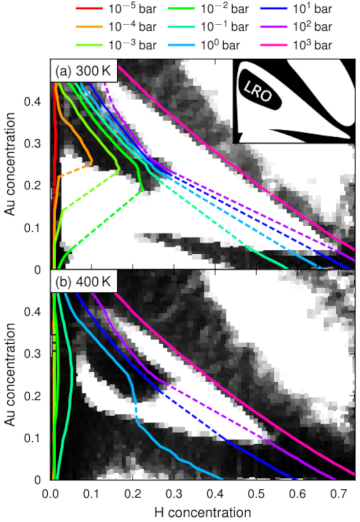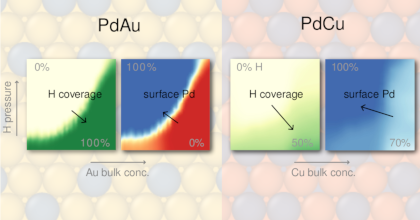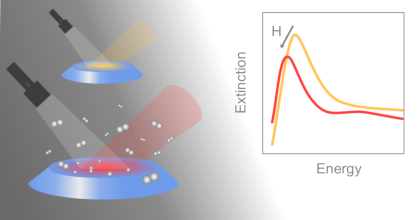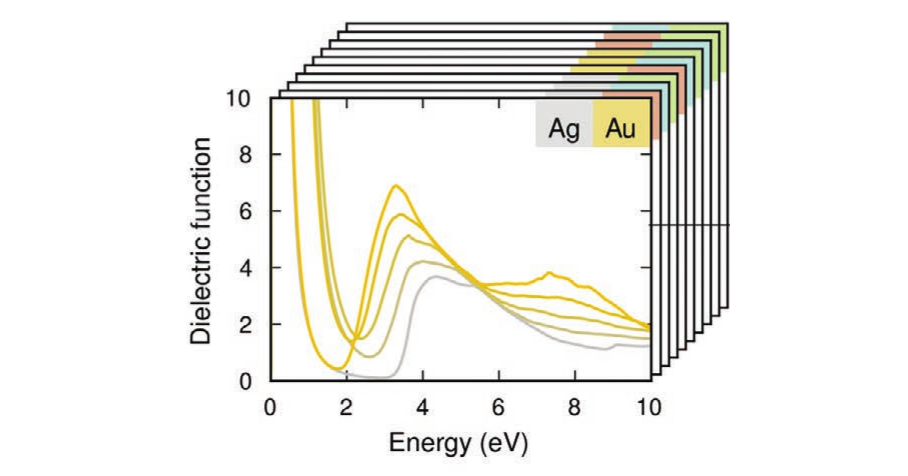A tale of two phase diagrams: Interplay of ordering and hydrogen uptake in Pd-Au-H
J. M. Rahm,
J. Löfgren,
E. Fransson,
and
P. Erhart
Acta Materialia 211, 116893
(2021)
arXiv:2103.14340
doi: 10.1016/j.actamat.2021.116893
Download PDF

Due to their ability to reversibly absorb/desorb hydrogen without hysteresis, Pd–Au nanoalloys have been proposed as materials for hydrogen sensing. For sensing, it is important that absorption/desorption isotherms are reproducible and stable over time. A few studies have pointed to the influence of short and long range chemical order on these isotherms, but many aspects of the impact of chemical order have remained unexplored. Here, we use alloy cluster expansions to describe the thermodynamics of hydrogen in Pd–Au in a wide concentration range. We investigate how different chemical orderings, corresponding to annealing at different temperatures as well as different external pressures of hydrogen, impact the behavior of the material with focus on its hydrogen absorption/desorption isotherms. In particular, we find that a long-range ordered L12 phase is expected to form if the H2 pressure is sufficiently high. Furthermore, we construct the phase diagram at temperatures from 250 K to 500 K, showing that if full equilibrium is reached in the presence of hydrogen, phase separation can often be expected to occur, in stark contrast to the phase diagram in para-equilibrium. Our results explain the experimental observation that absorption/desorption isotherms in Pd–Au are often stable over time, but also reveal pitfalls for when this may not be the case.



